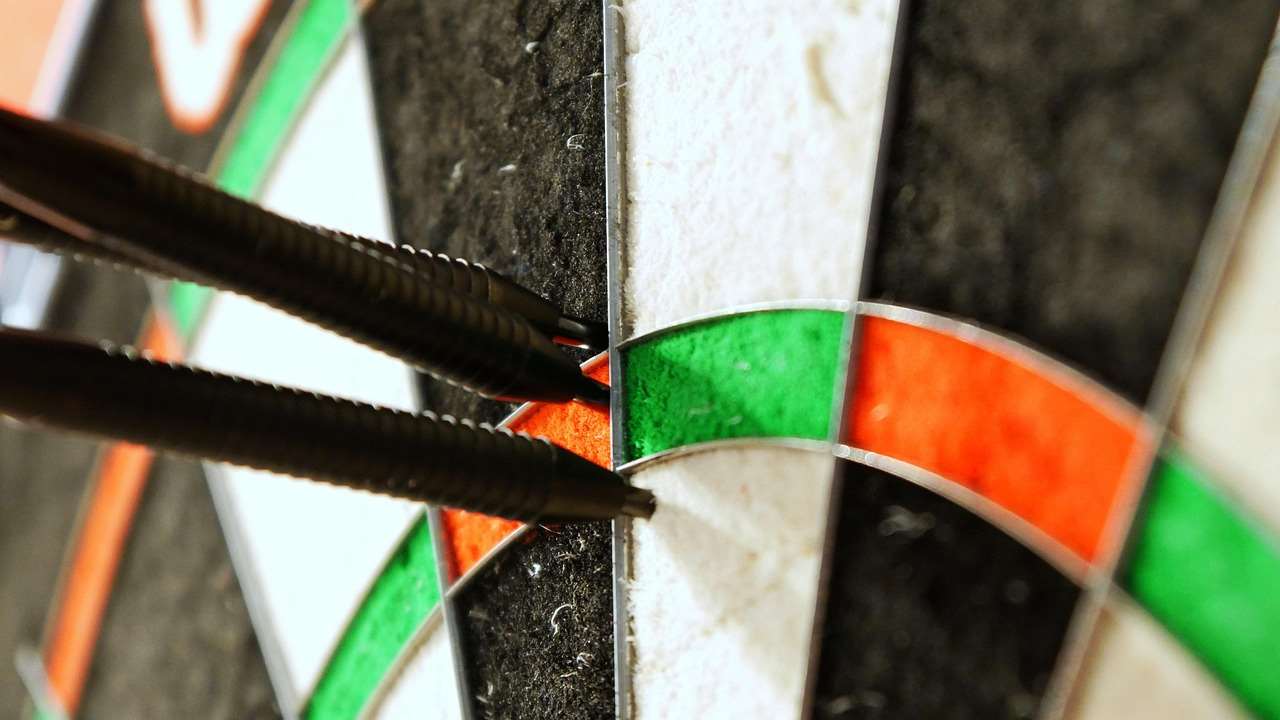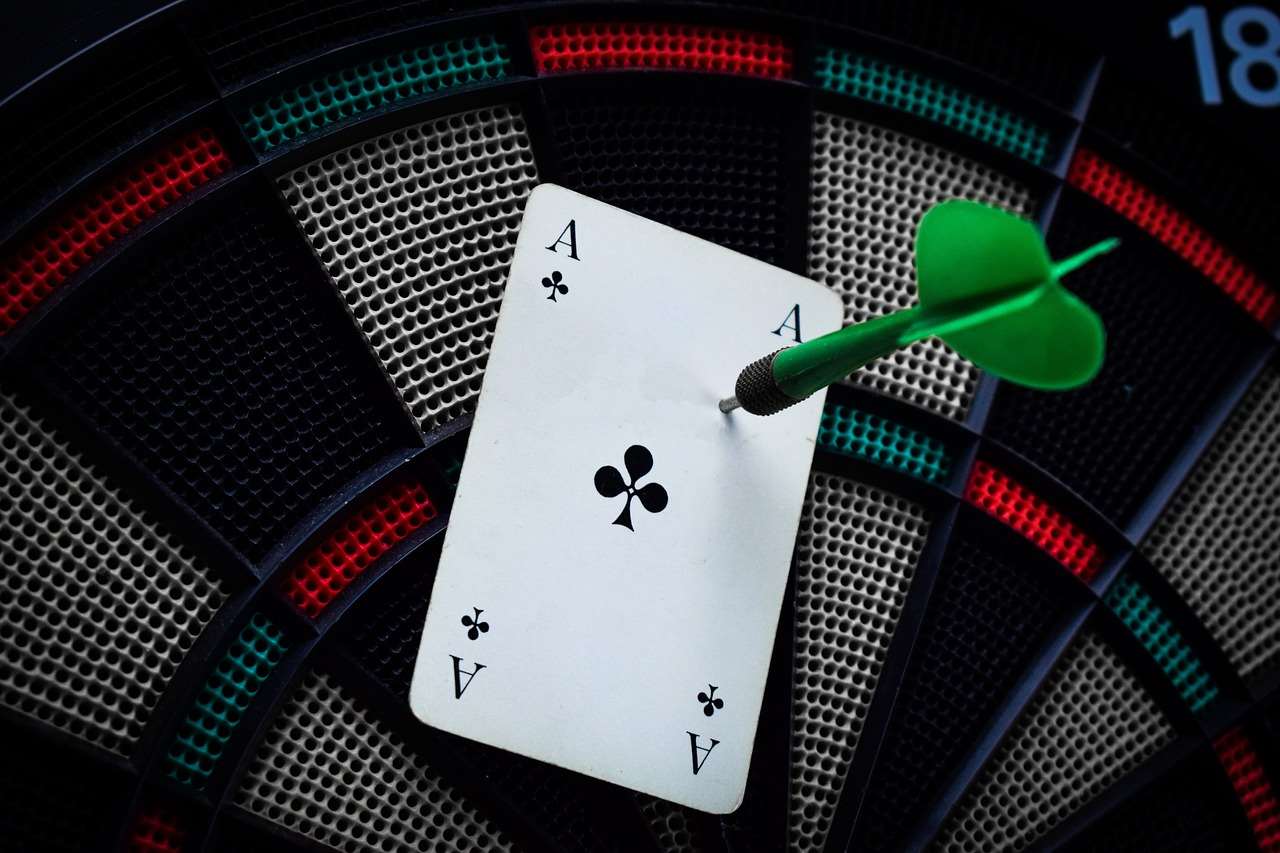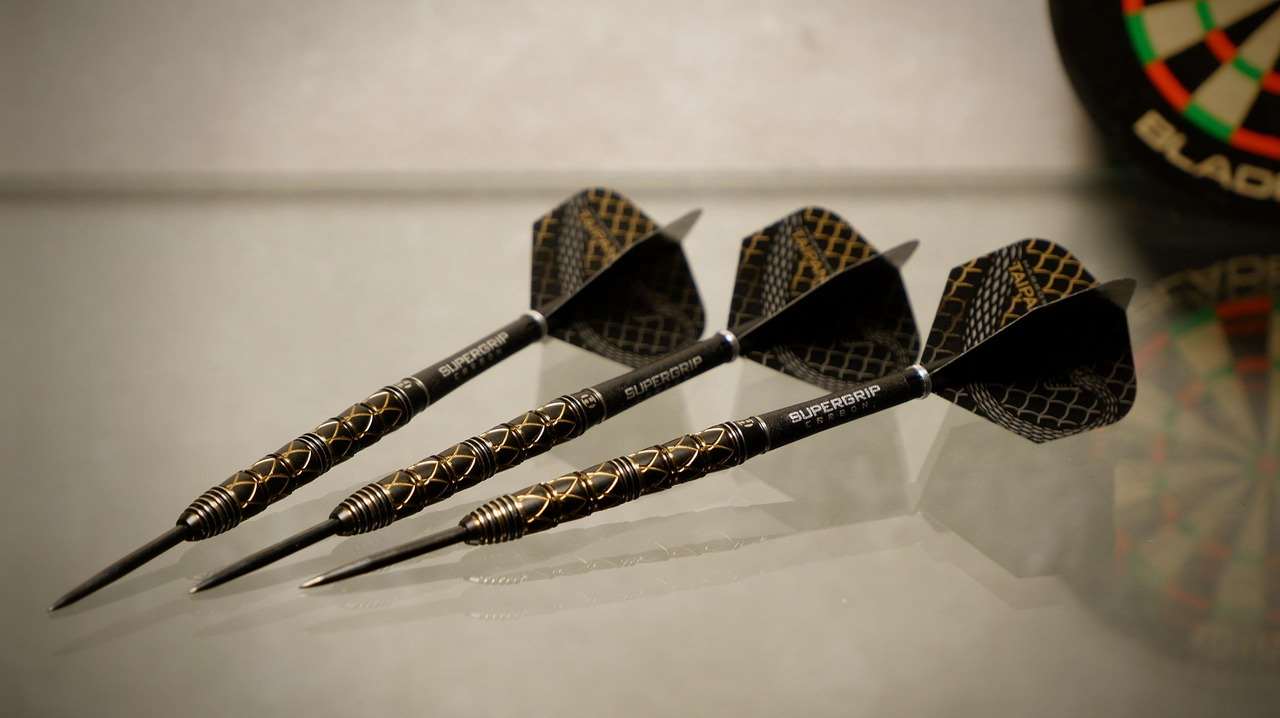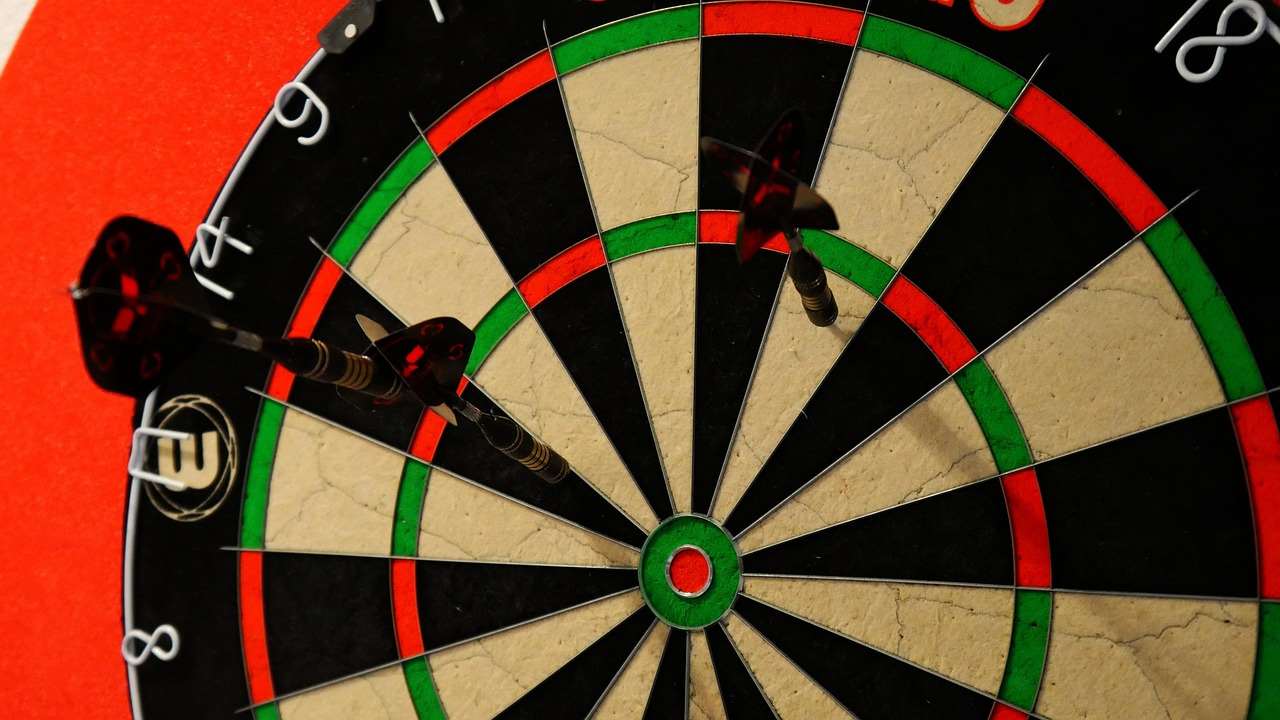Understanding the Fantasy Darts Player Equipment Impact is crucial for predicting performance and gaining an edge in your fantasy league. This article breaks down how different equipment choices affect a dart player’s game, from barrel grip to flight shape, enabling you to make smarter roster decisions. We’ll explore various aspects of dart customization and their potential influence on scoring, providing insights to boost your fantasy darts strategy.
⚠️ Still Using Pen & Paper (or a Chalkboard)?! ⚠️
Step into the future! The Dart Counter App handles all the scoring, suggests checkouts, and tracks your stats automatically. It's easier than you think!
Try the Smart Dart Counter App FREE!Ready for an upgrade? Click above!
Understanding the Fantasy Darts Player Equipment Impact
The seemingly simple game of darts involves a surprising amount of customization. From the weight and material of the dart barrel to the shape and size of the flights, every element contributes to a player’s throwing style and ultimately, their success. For fantasy darts players, understanding these nuances is key to predicting performance and maximizing your roster’s potential. Ignoring the equipment impact is a mistake you can’t afford to make.
Think of it like Formula 1 racing. While driver skill is paramount, the car’s setup plays a significant role in their lap times. Similarly, a dart player might possess exceptional talent, but poorly chosen or ill-suited equipment can hinder their ability to consistently hit the target. A change in dart weight, for example, can require a player to adjust their throwing technique significantly.

Key Components of Darts Equipment and Their Influence
Let’s delve into the specific components of a dart and how they influence a player’s performance:
- Barrel: The barrel is the body of the dart and comes in various materials (brass, tungsten), weights, and shapes. Tungsten barrels are denser, allowing for slimmer darts with the same weight, which can reduce grouping issues on the dartboard. A player’s preferred grip style often dictates the ideal barrel shape.
- Shaft: The shaft connects the barrel to the flights and is typically made of nylon, aluminum, or carbon fiber. Shaft length affects the dart’s balance and trajectory. Shorter shafts tend to make the dart fly straighter, while longer shafts can provide more stability. Experimentation is key to finding the right shaft length for a given player.
- Flights: Flights are attached to the end of the shaft and provide stability and control during flight. They come in numerous shapes (standard, kite, slim, pear), sizes, and materials. Larger flights offer more drag, slowing the dart down and increasing stability, while smaller flights are faster and more aerodynamic. Flight choice is highly personal, but a player’s throwing style often determines the best option.
- Points: The point is the sharp end of the dart that penetrates the dartboard. Points are usually made of steel and can be smooth, grooved, or coated. The point’s grip on the board can affect bounce-outs, so choosing a point that suits the dartboard’s material is crucial.

How Equipment Affects Dart Trajectory and Accuracy
The interplay between these components directly impacts a dart’s trajectory and accuracy. For instance, a heavier barrel paired with short shafts and small flights might result in a fast, straight dart suitable for players with a powerful throw. Conversely, a lighter barrel with longer shafts and larger flights could produce a slower, more controlled dart ideal for players who prefer finesse. Understanding these relationships is vital for assessing the Fantasy Darts Player Equipment Impact.
Furthermore, even subtle changes can have a significant effect. A player switching from standard flights to slim flights might experience a noticeable increase in speed but a decrease in stability. This can lead to inconsistent groupings and lower scores, particularly under pressure. Monitoring equipment changes and assessing their short-term impact is essential for fantasy players.
Consider the dart weight. A slight increase or decrease can completely throw off a player’s muscle memory. This is why professional players often stick to their preferred equipment for years, making only minor adjustments as needed. If a player suddenly changes their dart weight, it’s a red flag for fantasy purposes.
Analyzing Professional Darts Players Equipment Choices
Observing the equipment choices of professional darts players can provide valuable insights. Many professionals have endorsement deals with dart manufacturers, but they typically choose equipment that aligns with their individual needs and preferences. Here are a few examples:
- Michael van Gerwen: Known for his aggressive throwing style, Van Gerwen typically uses relatively heavy tungsten darts with a specific grip pattern. He also carefully selects his shafts and flights to optimize his dart’s trajectory.
- Gerwyn Price: Price, another top player, uses darts that complement his powerful and direct throwing motion. His setup is meticulously chosen to provide the stability and control he needs.
- Peter Wright: Wright is known for his flamboyant style and ever-changing dart setups. While this makes him unpredictable, it also highlights the importance of experimentation and finding the right equipment for a given situation.
By studying these examples, you can gain a better understanding of how professional players tailor their equipment to suit their individual playing styles. This knowledge can then be applied to your fantasy darts strategy.

Spotting Equipment Changes and Their Potential Impact on Fantasy Darts
Staying informed about equipment changes is crucial. Here’s how to spot them and assess their potential impact:
- Follow Player Interviews and Social Media: Many players announce equipment changes in interviews or on social media. This is the most direct way to learn about new setups.
- Observe Gameplay Footage: Pay close attention to the player’s darts during matches. Look for differences in barrel shape, shaft length, or flight design.
- Read Darts News and Forums: Darts news outlets and online forums often discuss equipment changes and their potential impact.
Once you’ve identified an equipment change, consider the following factors:
- Player’s History: Has the player made similar changes in the past? How did they perform after those changes?
- Nature of the Change: Is it a minor adjustment or a complete overhaul? Drastic changes are more likely to have a significant impact.
- Player’s Form: Is the player currently in good form? An equipment change might exacerbate existing struggles or help them overcome a slump.

Incorporating Equipment Analysis into Your Fantasy Darts Strategy
Here’s how to integrate equipment analysis into your fantasy darts strategy:
- Consider Equipment When Drafting: Factor in a player’s equipment preferences and stability when drafting your team. Players who consistently use the same equipment are generally more reliable.
- Monitor Equipment Changes Throughout the Season: Track any equipment changes and adjust your roster accordingly. Don’t be afraid to bench a player who is struggling to adapt to a new setup.
- Use Equipment Information to Make Informed Trade Decisions: If you know that a player is switching to a new set of darts, you might want to trade them before their performance declines.
- Focus on Shafts and Flights: These are often the first changes players make, and they can quickly impact performance.
Remember that fantasy darts, much like real darts, involves a blend of skill, strategy, and a bit of luck. Understanding the nuances of darts culture and community guide and the Fantasy Darts Player Equipment Impact can provide a significant edge in your league. Think about how to start a darts league, it all begins with understanding the game.
The Psychological Side of Darts Equipment
It’s also worth noting the psychological impact of equipment. A player who feels confident in their darts is more likely to perform well, regardless of the objective quality of their equipment. This is why some players are superstitious about their darts and refuse to change them, even if they are worn down. The belief in one’s equipment can be a powerful performance enhancer. However, the darts league management tips often overlook this aspect.
Conversely, a player who is constantly tinkering with their equipment might lack confidence in their abilities. This can lead to self-doubt and inconsistent performance. Recognizing these psychological factors is essential for a comprehensive assessment of the Fantasy Darts Player Equipment Impact. Understanding the mentality behind a player’s equipment choices can be as revealing as the technical specifications.
Consider the case of a player switching to a new manufacturer. This might be seen as a purely technical decision, but it can also signal a lack of confidence in their previous equipment or a desire for a fresh start. These psychological factors can have a ripple effect on their performance and, consequently, on your fantasy team.

Conclusion: Maximizing Your Fantasy Darts Potential
In conclusion, understanding the Fantasy Darts Player Equipment Impact is a crucial element of a successful fantasy darts strategy. By paying attention to the various components of a dart, monitoring equipment changes, and considering the psychological factors involved, you can gain a significant advantage over your competitors. Remember to stay informed, adapt to changes, and use this knowledge to make informed decisions about your roster. The better you understand the equipment, the better you can predict performance and the more success you will have. Don’t underestimate the power of a well-chosen dart!
Ready to put your knowledge to the test? Start tracking equipment changes among your favorite players and see how it impacts their performance. This hands-on experience is the best way to truly understand the Fantasy Darts Player Equipment Impact and unlock your full fantasy darts potential.
Hi, I’m Dieter, and I created Dartcounter (Dartcounterapp.com). My motivation wasn’t being a darts expert – quite the opposite! When I first started playing, I loved the game but found keeping accurate scores and tracking stats difficult and distracting.
I figured I couldn’t be the only one struggling with this. So, I decided to build a solution: an easy-to-use application that everyone, no matter their experience level, could use to manage scoring effortlessly.
My goal for Dartcounter was simple: let the app handle the numbers – the scoring, the averages, the stats, even checkout suggestions – so players could focus purely on their throw and enjoying the game. It began as a way to solve my own beginner’s problem, and I’m thrilled it has grown into a helpful tool for the wider darts community.